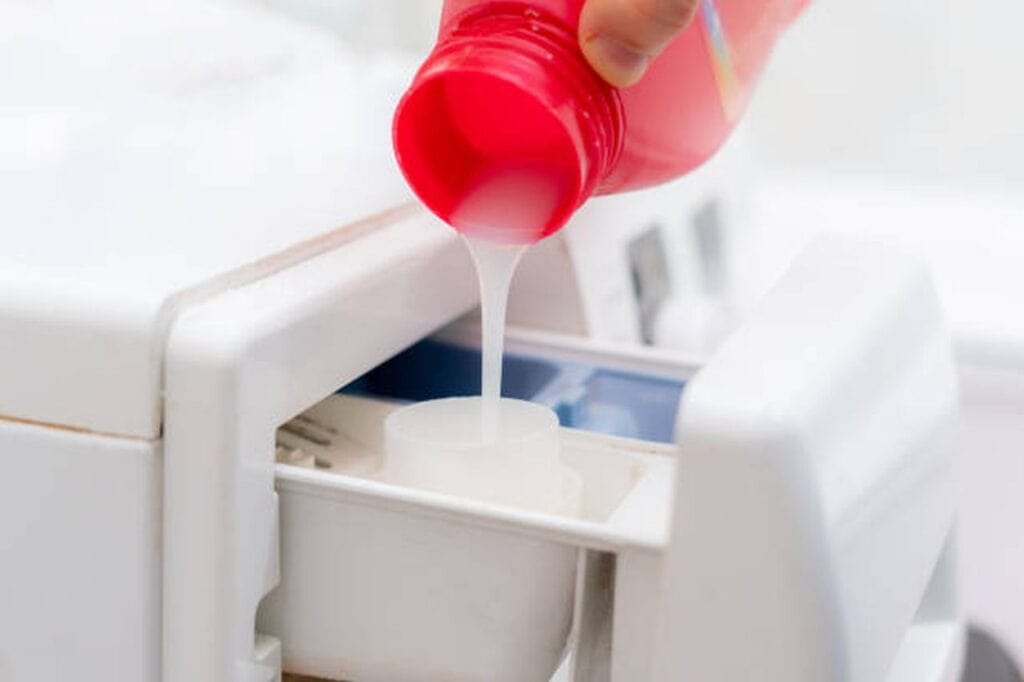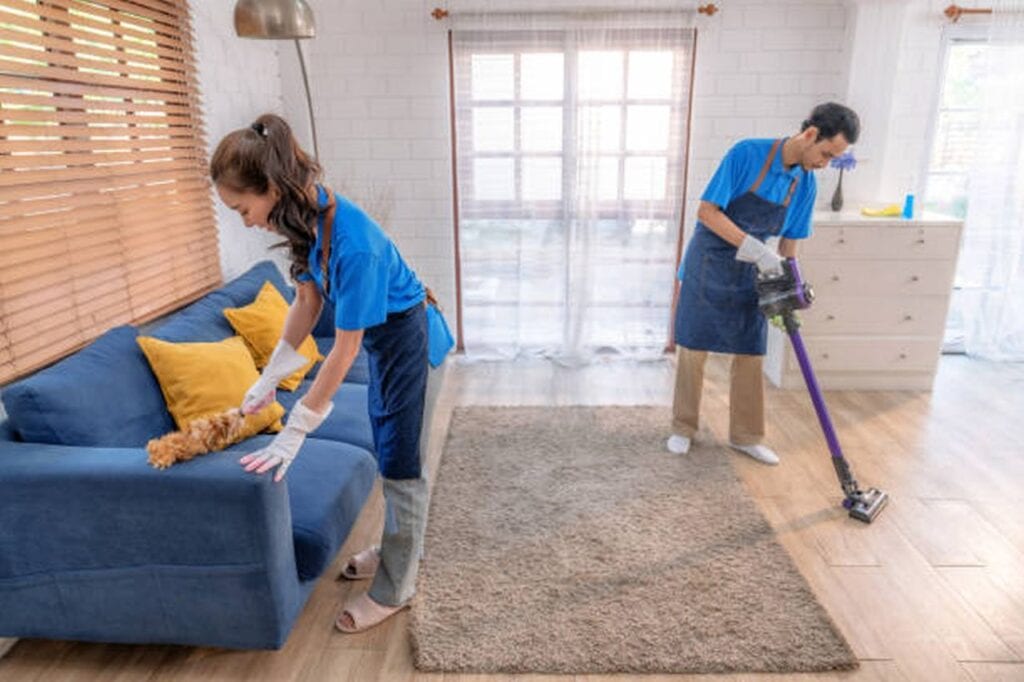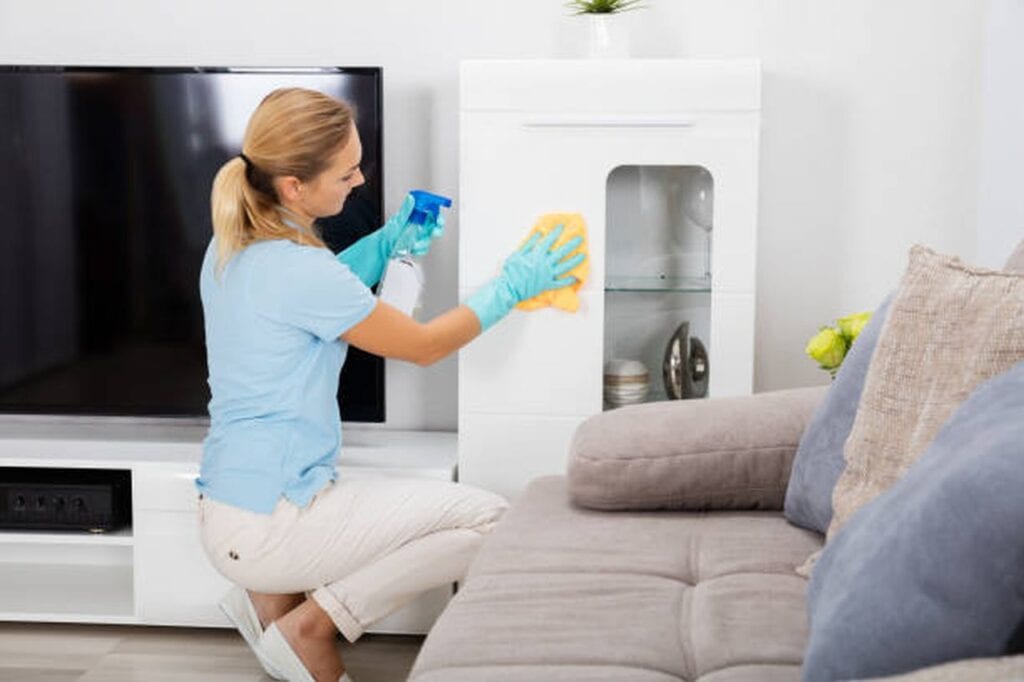As businesses and consumers in today's fast-paced world have different needs, the commercial cleaning industry has changed significantly. The sector has changed dramatically due to emphasising efficiency, sustainability, and higher cleaning standards. Here, we look at how recent developments have revolutionised the commercial cleaning business and emerging tendencies that will shape its future.
Analytics and Monitoring of Performance Data
There has been a dramatic improvement in the administration of commercial cleaning services because of the advent of data analytics and performance monitoring systems. Cleaning businesses can benefit from digital platforms and software solutions by tracking and analysing information such as cleaning schedules, resource allocation, and customer feedback. This data-driven strategy enables ahead-of-scheduled servicing, analytics for forecasting, and ongoing enhancements to service quality.
With real-time reporting and performance dashboards, customers can see exactly how their cleaning services are doing. Cleaners and their customers may work together more effectively with the help of these apps, which boosts customer happiness and service quality.
More Stringent Health and Safety Precautions
Due to the pandemic, there has been a heightened focus on safety and hygiene in the commercial cleaning business. The risk of viral transmission has been reduced by reevaluating cleaning procedures to ensure they conform to strict health rules. Increased efforts to clean and disinfect frequently touched areas are now the norm.
The need for contactless technology has also increased. To reduce the spread of germs, businesses have begun installing automatic soap dispensers, sensor-operated faucets, and hands-free entrance systems. As an additional line of defence against infectious disease, UV-C light sterilisation devices have gained popularity.

Green and Sustainable Practices
Sustainability has become increasingly important in the commercial cleaning sector in recent years. Cleaning products that are gentler on the environment are gaining popularity among businesses. As a result, "green cleaning," which emphasises the use of biodegradable and non-toxic cleaning products and energy-efficient equipment, has gained popularity.
Sustainable waste management is also a growing concern. The amount of garbage sent to landfills is being reduced through recycling and waste reduction programmes. Furthermore, microfiber cleaning cloths and mops, which are reusable and exceptionally effective for collecting dirt and bacteria, have become increasingly popular. These environmentally friendly policies help the planet and create healthier workplaces and retail establishments.
Scrubbing With Technology
Technological advancements that increase efficiency and output have revolutionised the commercial cleaning sector. One example is how introducing robotic cleaners has freed humans to focus on more difficult and nuanced activities. These smart robots can move around on their own, navigating around obstacles while they clean. They can easily adjust to new surfaces and produce reliable results thanks to sophisticated sensors and AI algorithms.
Moreover, the IoT has allowed for the creation of high-tech cleaning equipment. Occupancy levels, consumable usage, and air quality are metrics networked devices like sensors and smart dispensers may track in real-time. By taking a data-driven approach, cleaning services can streamline their processes to meet their clients' needs better. Companies that specialise in commercial cleaning can better meet the needs of their customers by taking advantage of technological advancements.
Specialized Cleaning Services
Due to today's enterprises' increasing specialisation and diversity, there is a greater demand for individualised janitorial services. Many commercial cleaning businesses now provide niche services for the medical, hospitality, and manufacturing sectors. These services are designed to meet the cleaning needs of a given industry while also meeting the requirements of various regulations, keeping the workplace and its patrons safe.
The commercial cleaning sector has evolved greatly in response to new tools, increased emphasis on environmental friendliness, and stricter regulations regarding worker health and safety. Robotic cleaners and Internet of Things-enabled devices are just two examples of how cutting-edge innovation has improved efficiency and output. The environment and the people who work in commercial buildings both stand to profit from the trend towards green and sustainable practices. In addition, it is now more important than ever to prioritise strict adherence to established safety and hygiene procedures in the wake of the epidemic.
What Is the Future of Technology and Cleaning?
An exciting new frontier, the merging of technology and cleaning, has the potential to revolutionise institutional and individual hygiene standards. The cleaning industry is on the cusp of a new era, meaning several trends and technologies that promise efficiency, sustainability, and higher health and safety standards are shaping the industry.
Robotics and other automated machinery are set to first and primarily change the face of the cleaning business. Sensor-laden and AI-enabled robotic vacuum cleaners are the wave of the future. These robots have the capability of autonomous navigation, the ability to detect filth, and the ability to clean efficiently. They provide many benefits, including higher productivity, lower costs, and elimination of mundane, labour-intensive jobs so that humans may focus on more high-level, strategic work.
The Internet of Things (IoT) is revolutionising the cleaning industry by being included in tools and procedures. Devices connected through the Internet of Things can exchange information in real-time, shedding light on sanitation procedures. Smarter allocation of resources and more timely maintenance are possible thanks to sensors embedded in machinery that track usage, check supply levels, and optimise cleaning schedules. Improved efficiency and lower operating costs result from this network's ability to promote a data-driven, preventative approach to cleaning.
Improving sanitation procedures will be a major focus of machine learning and AI. Algorithms powered by artificial intelligence can sift through mountains of data to find the best approach to cleaning a place, anticipate when repairs will be required, and even create individualised cleaning schedules. Cleansing efficiency is increased while waste and resources are conserved because of this level of intelligence.
The future of housekeeping will likely revolve around eco-friendly practices. There will be a significant need for cleaning products that are safe for the environment and biodegradable, as well as energy-efficient cleaning machines. Following global initiatives to lessen our impact on the environment, "green cleaning" methods will continue to rise in popularity. Using water-saving devices and waste-reduction initiatives will aid the incorporation of sustainable practices and efficient resource management.
Future cleaning methods will be influenced even more by the proliferation of smart buildings and smart cities. Integrating cleaning systems into BMSes will make it possible to make instantaneous changes in response to variables like occupancy rates, visitor volume, and cleaning requirements. Cameras and sensors can automatically clean high-traffic areas when they're detected. Taking preventative measures like this guarantees a cleaner, healthier space for people there.
Augmented and virtual reality (AR/VR) technology will improve training and skill development in the cleaning sector. Virtual reality (VR) simulations can recreate real-world cleaning settings, providing a risk-free and controlled setting where workers can hone their skills. With the help of augmented reality programmes, workers can be directed to problem areas and advised on the best ways to clean them.
Hygiene, environmental friendliness, and productivity will all take a giant leap forward in the next generation of cleaning tools and methods. Such a future will be supported by innovations such as autonomous cleaning robots, Internet of Things (IoT) integration, artificial intelligence (AI)-driven optimisation, sustainability initiatives, IoT-integrated smart buildings, and immersive training technologies. Adopting these innovations will result in cleaner, safer, and more ecologically responsible communities for everyone.
Will the Price of Commercial Cleaning Go Up in the Future?
Due to the complicated interplay of multiple elements, predicting the precise price direction in the commercial cleaning market is difficult. While the future cost of commercial cleaning services is uncertain, some trends and prospective factors can be analysed to provide insight.
The rate of technological progress is a major element that could affect prices. While advanced technologies like robotics, AI, and the Internet of Things (IoT) can improve efficiency and safety in commercial cleaning, they also can raise prices for these services. Significant resources are needed to acquire and maintain specialised equipment and train the workforce to operate and manage these complex systems efficiently before these technologies can be implemented.
For instance, robotic cleaners are advancing to the point where they can independently navigate rooms, detect dirty spots, and clean them up with minimum human interaction. While they boost efficiency and production, they may also lead to a rise in service prices due to their high upfront and recurring costs. Costs may be stabilised or even reduced in the long run thanks to the efficiency gains brought about by these technologies.
Cost rises might be mitigated by efficiency and productivity benefits from technological integration, creating a more competitive pricing environment. Cleaning firms may now service more customers at the same or slightly increased prices thanks to technological advancements that have made it possible to execute chores more quickly and precisely. This equilibrium, driven by efficiency, may help keep prices steady or prevent them from rising dramatically.

Pricing in the commercial cleaning business is very sensitive to market demand and supply changes. There may be an initial price increase for cleaning services if demand increases due to rising hygiene awareness or, for example, worldwide health concerns (as seen with the COVID-19 epidemic). But if there are too many cleaning service providers in the market, competition could force prices down as firms try to attract customers.
Future prices are also heavily influenced by economic considerations. The operating costs of cleaning enterprises are susceptible to fluctuations in labour costs, inflation rates affecting cleaning goods and equipment, and the cost of living. Providers of these services may need to raise or lower their pricing to ensure continued profitability and business viability.
Programmes promoting sustainability or modifying existing regulations may also affect price adjustments. There may be a transition towards sustainable cleaning methods that are kinder to the environment. Eco-friendly cleaning solutions may become more accessible to the general public despite the higher initial costs associated with sustainable cleaning goods and equipment.
Commercial cleaning prices may initially grow as new technologies are implemented in response to rising demand. Still, they may level out or decrease due to efficiency gains, market dynamics, economic reasons, and environmental initiatives. These factors will likely come together to form the commercial cleaning pricing models of the future, which will eventually reflect the changing priorities of both service providers and their customers.
Conclusion
Introducing biodegradable and non-toxic cleaning solutions and energy-efficient equipment has contributed to the sector's growing emphasis on green and sustainable practices. Popularity has increased for both eco-friendly garbage disposal methods and microfiber cleaning tools. Technological innovations like robotic cleaners and Internet of Things-enabled gadgets have enhanced productivity and efficiency by allowing humans to focus on higher-order activities.
As businesses become more specialised and varied, they have a greater need for specialised cleaning services. Nowadays, it's not uncommon for commercial cleaning companies to offer specialised services tailored to the needs of particular industries, such as the medical, hospitality, or manufacturing sectors.
With today's and tomorrow's cleaning technologies, improved health and safety measures, reduced environmental impact, and greater efficiency are all possible. Robotic vacuum cleaners with sensors and artificial intelligence will change the cleaning industry forever. Integrating devices into tools and procedures enabled by IoT paves the way for real-time information exchange and more efficient resource allocation, both reshaping the industry. Sanitation processes, resource conservation, and productivity will all be prioritised by AI and ML researchers in the future.
Supported by developments such as autonomous cleaning robots, IoT integration, AI-driven optimisation, sustainability initiatives, IoT-integrated smart buildings, and immersive training technologies, the next generation of cleaning tools and methods will prioritise cleanliness, environmental friendliness, and productivity. Numerous variables, such as developing technologies, market demand and supply, economic concerns, and environmental goals, all contribute to price volatility for commercial cleaning services.
Frequently Asked Questions About Cleaning Services
What Services Are Typically Included In A Professional Cleaning Service?
Cleaning services normally include dusting, vacuuming, floor washing, and bathroom and kitchen disinfection. Your firm and package may include window washing, carpet shampooing, and dusting in a deep cleaning.
Are Professional Cleaning Services Safe For Pets And Children?
A reputable cleaning service will only use eco-friendly cleaning products. If your family or pets have sensitivity to certain cleaning agents, tell the cleaning personnel.
What Clients Are Looking For In Cleaning Services?
Trustworthy cleaners are what our customers are seeking. Remember that they are letting you inside their house when they themselves are not there. In addition to a spotless house, they need impeccable service from skilled cleaners.
Are Professional Cleaning Services Customisable To My Specific Needs?
Most professional cleaning businesses provide customisable plans. The cleaning service provider can customise services to your needs. Customisation is usually available for one-time thorough, weekly, and event cleanings.
Is It Necessary To Be Home During The Cleaning Service?
Being at home during the cleaning process is prefered, but not required. Many people let the cleaning service in and go about their day after handing them the keys and instructions. Specialist, trustworthy, and reliable cleaning services are what you need. Attending the cleaning in person can help ease your anxiety.
